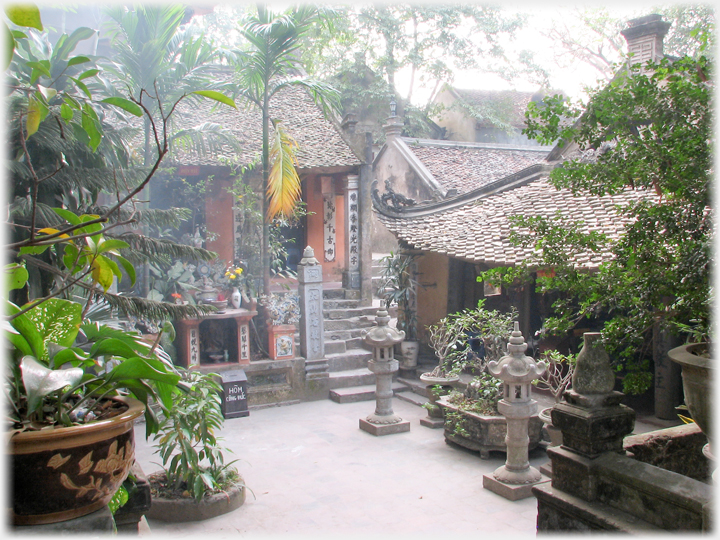 Probably the word exquisite has not been used on this site before, but the upper courtyard of the Thầy pagoda evokes strong praise. It oozes history and charm and does so on a human scale that is enchanting. The atmosphere, on the day of this photograph, was enhanced by a slight mist, which you can just see, shrouding the hilltop
The Master's Pagoda (Chùa Thầy) lies about 20 miles (30 Kilometres) west of central Hà Nội. The main buildings nestle among the rocks at the top of a steeply sloping hill. But there are other buildings at the foot of the hill by the lake. The climb between the two parts is hard work - don't go in the summer. The master in this case was one Đạo Hành, a herbalist in the local village of Sài Sơn practising sometime during the 11th century. Traditions are too opaque to be clear about the extent of his Buddhist involvement, but now the complex is a Buddhist centre as the use of the word Pagoda (Chùa) shows.
Probably the word exquisite has not been used on this site before, but the upper courtyard of the Thầy pagoda evokes strong praise. It oozes history and charm and does so on a human scale that is enchanting. The atmosphere, on the day of this photograph, was enhanced by a slight mist, which you can just see, shrouding the hilltop
The Master's Pagoda (Chùa Thầy) lies about 20 miles (30 Kilometres) west of central Hà Nội. The main buildings nestle among the rocks at the top of a steeply sloping hill. But there are other buildings at the foot of the hill by the lake. The climb between the two parts is hard work - don't go in the summer. The master in this case was one Đạo Hành, a herbalist in the local village of Sài Sơn practising sometime during the 11th century. Traditions are too opaque to be clear about the extent of his Buddhist involvement, but now the complex is a Buddhist centre as the use of the word Pagoda (Chùa) shows.
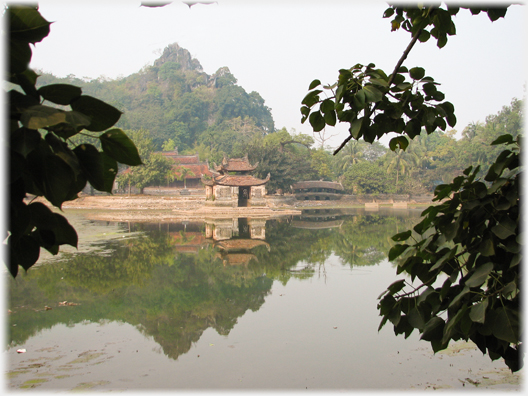 These three pictures show the pavilion, by the lake, successively closer. The hill with the main buildings is out of sight to the left
These three pictures show the pavilion, by the lake, successively closer. The hill with the main buildings is out of sight to the left
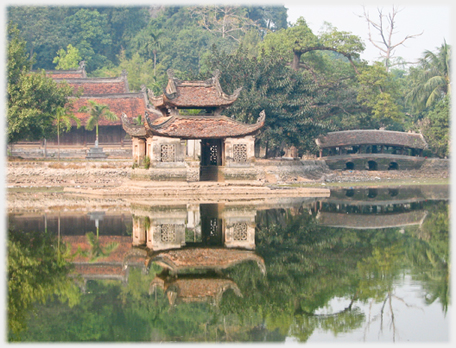 The part of the lower pagoda is in the background, the foreground building is in fact normally on an island, at the time of this picture the water level had been lowered, you can see the normal water level by the green colour...
The part of the lower pagoda is in the background, the foreground building is in fact normally on an island, at the time of this picture the water level had been lowered, you can see the normal water level by the green colour...
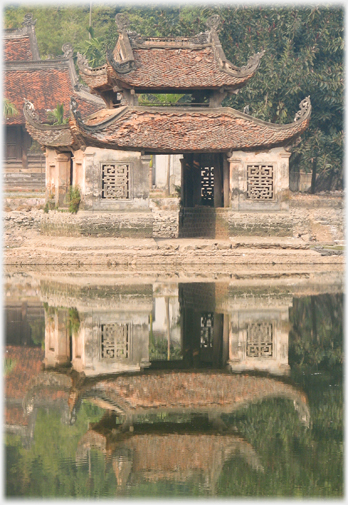 ...on the building; a building possibly made more delightful for its need of care and attention
...on the building; a building possibly made more delightful for its need of care and attention
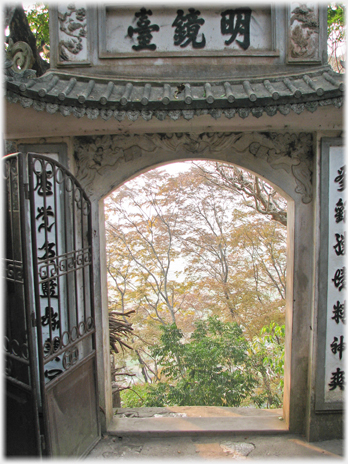 The view looking back down the hill
The view looking back down the hill
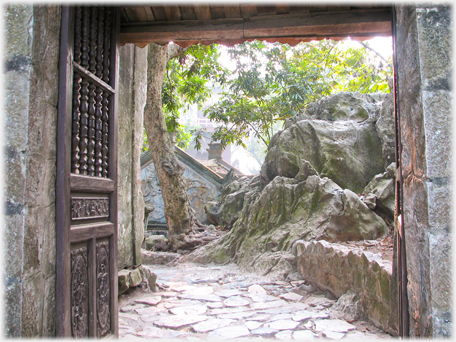 Through an inner gate the hilltop buildings appear
Through an inner gate the hilltop buildings appear
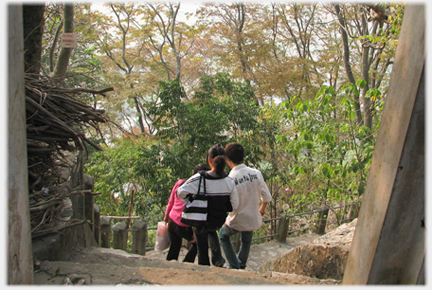 The sideways movement of these visitors shows the steepness of the descent
The sideways movement of these visitors shows the steepness of the descent
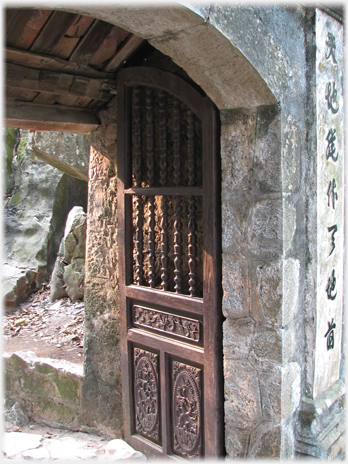 Fine wooden doors at this entrance gate
Fine wooden doors at this entrance gate
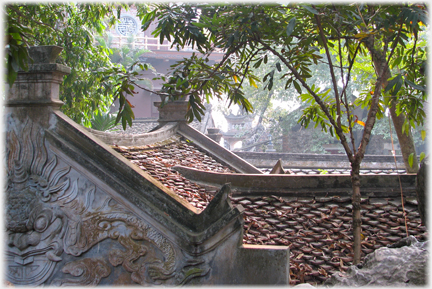 More of the rooftops seen as the path ascends
More of the rooftops seen as the path ascends
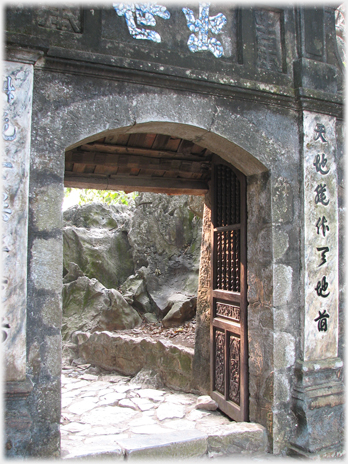 Chinese characters surround this entrance
Chinese characters surround this entrance
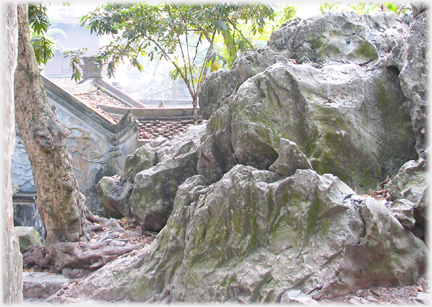 Rocks projecting between the buildings on the hilltop
Rocks projecting between the buildings on the hilltop
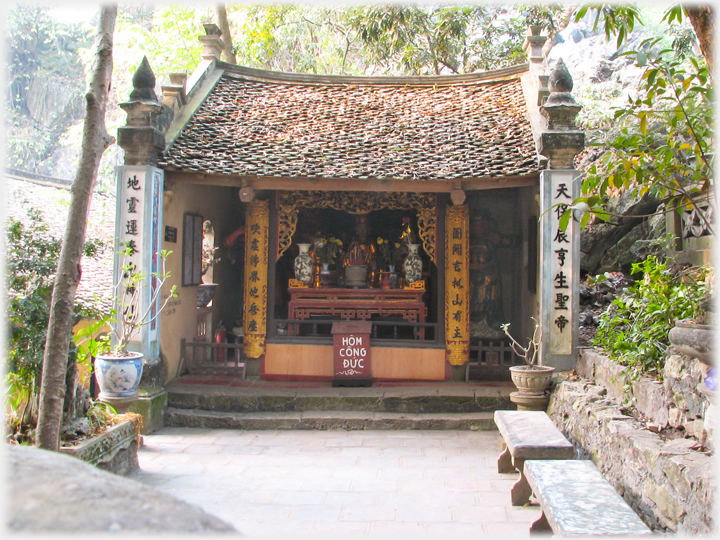 A small shrine amongst the buildings, with a large notice saying roughly 'Charity Box'
A small shrine amongst the buildings, with a large notice saying roughly 'Charity Box'
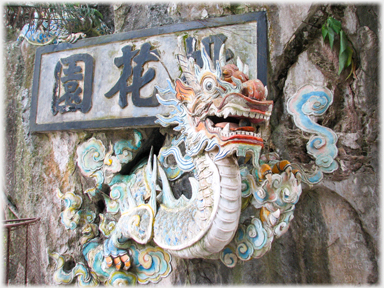 A small sharp toothed dragon in defensive mode emerges from a wall. The Chinese sign behind it will be as opaque to Vietnamese as to us
A small sharp toothed dragon in defensive mode emerges from a wall. The Chinese sign behind it will be as opaque to Vietnamese as to us
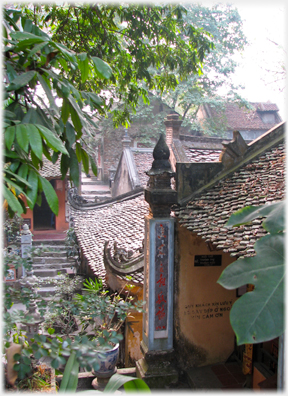 Passageways emphasise the huddled nature of the packed buildings...
Passageways emphasise the huddled nature of the packed buildings...
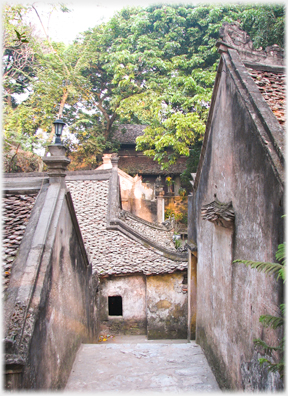 ...trying to fit into the very limited space on the hilltop
...trying to fit into the very limited space on the hilltop
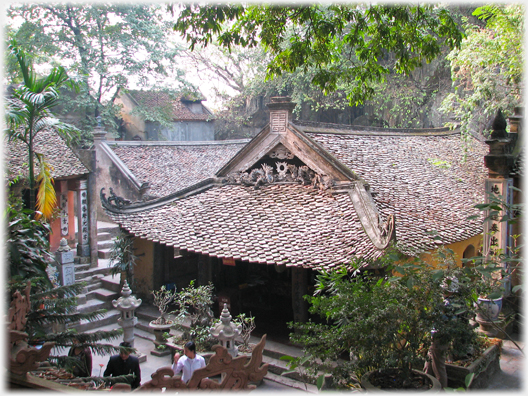 The rooftops by the courtyard (see top picture) with the turned up corners and open eves so typical of classic public buildings in Vietnam
The rooftops by the courtyard (see top picture) with the turned up corners and open eves so typical of classic public buildings in Vietnam
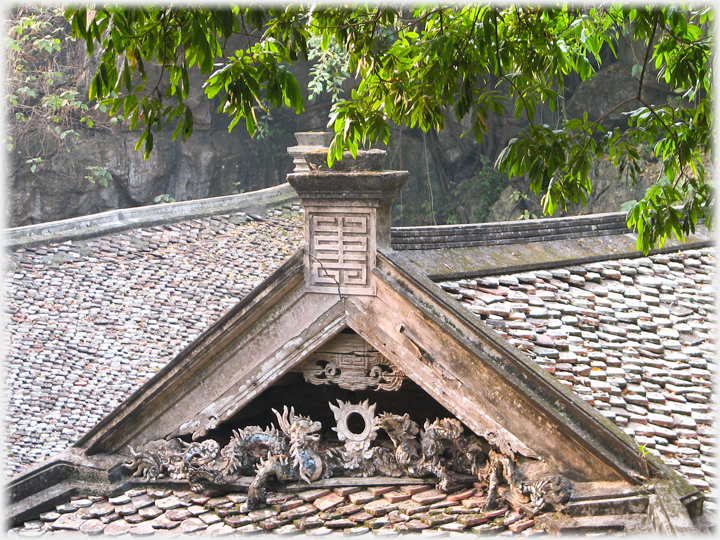 The open end of the roof, shown above, festooned in dragons to keep out unwanted guests
The open end of the roof, shown above, festooned in dragons to keep out unwanted guests
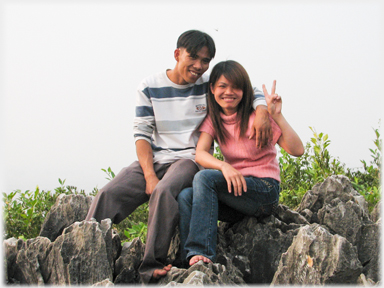 Younger visitors find the climb strenuous too. The Vietnamese for two is hai, hence the greeting
Younger visitors find the climb strenuous too. The Vietnamese for two is hai, hence the greeting
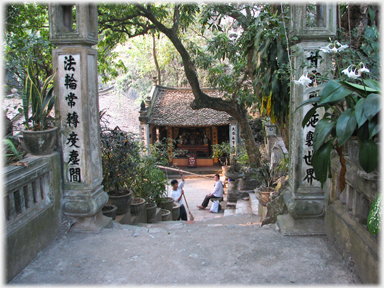 Looking down at the shrine pictured higher up the page (with charity box) - a worker waves
Looking down at the shrine pictured higher up the page (with charity box) - a worker waves
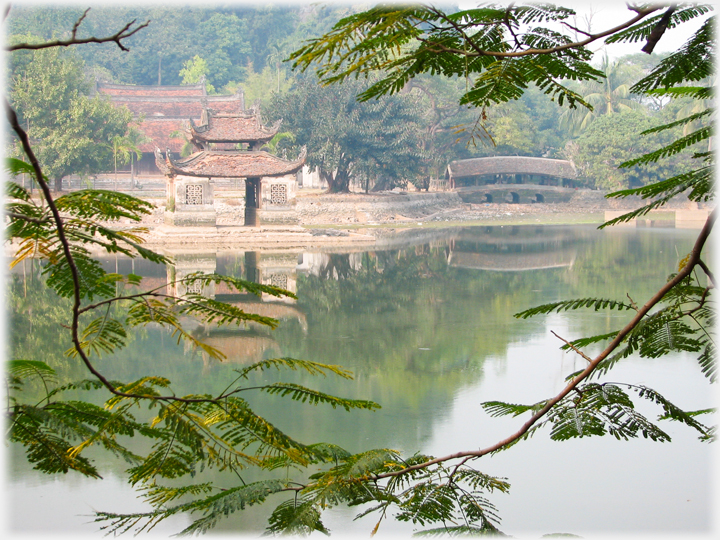 O.K. you have (nearly) seen this shot already - but my excuse is that it does suggest something of the Vietnamese Tourist Board's slogan "The hidden charm of Vietnam"
Trailers...
O.K. you have (nearly) seen this shot already - but my excuse is that it does suggest something of the Vietnamese Tourist Board's slogan "The hidden charm of Vietnam"
Trailers...
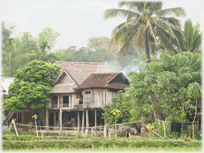 The next page
of this section takes you further west from Hà Nội, beyond the Thầy Pagoda, to the village of Mai Châu.
The next page
of this section takes you further west from Hà Nội, beyond the Thầy Pagoda, to the village of Mai Châu.
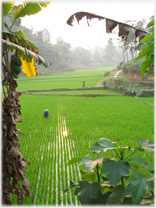 The next page
of the Mosaic Section is to be headed 'Nature's Grain'.
The next page
of the Mosaic Section is to be headed 'Nature's Grain'.
Or go to the contents of the Mosaic Section.

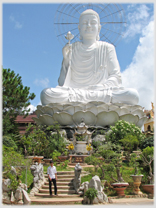
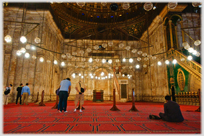 To another religious complex on a hill - the Citadel in Cairo
To another religious complex on a hill - the Citadel in Cairo
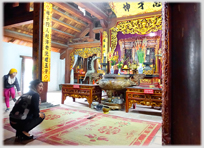 To the Đển Cờn Pagoda in Nghệ An Province, Vietnam
To the Đển Cờn Pagoda in Nghệ An Province, Vietnam
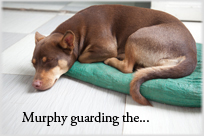 ...guide to this site
...guide to this site